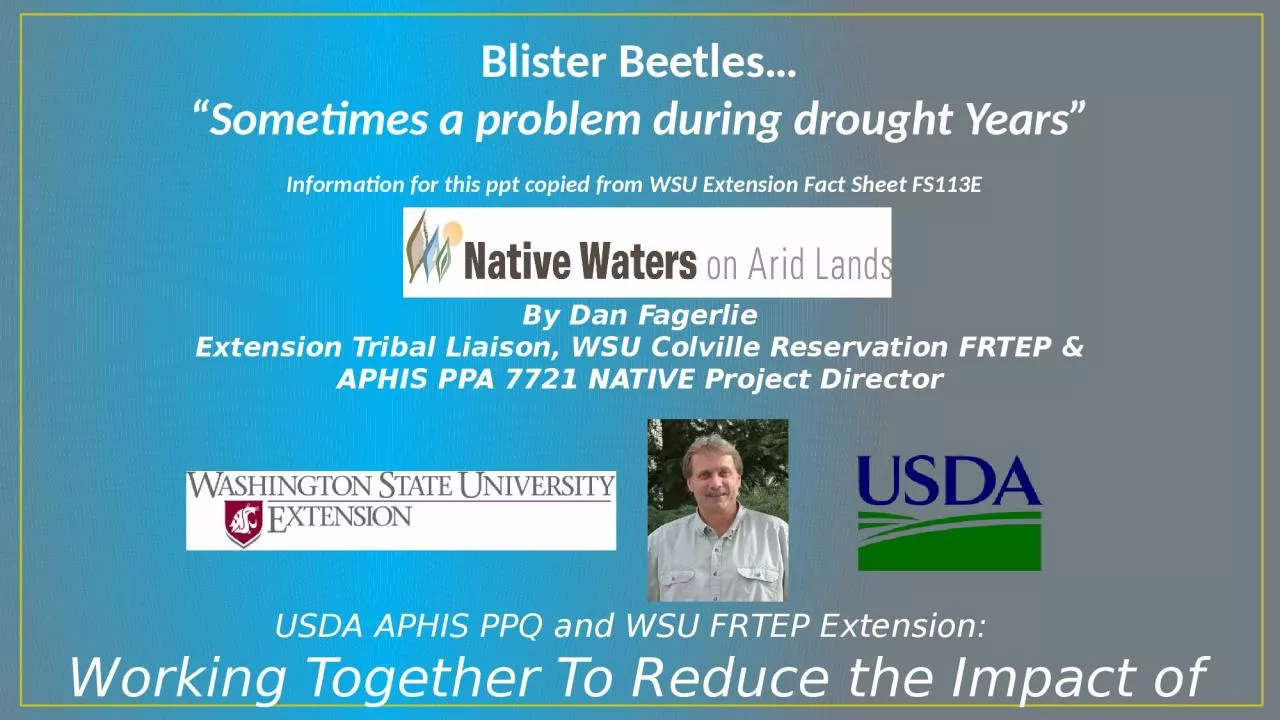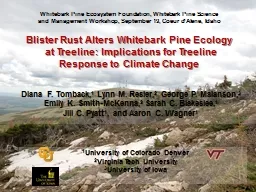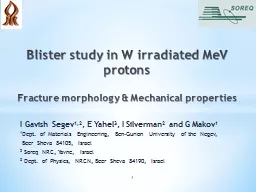PPT-Blister Beetles… “Sometimes a problem during drought Years”
Author : lam | Published Date : 2022-07-01
Information for this ppt copied from WSU Extension Fact Sheet FS113E By Dan Fagerlie Extension Tribal Liaison WSU Colville Reservation FRTEP amp APHIS PPA 7721
Presentation Embed Code
Download Presentation
Download Presentation The PPT/PDF document "Blister Beetles… “Sometimes a proble..." is the property of its rightful owner. Permission is granted to download and print the materials on this website for personal, non-commercial use only, and to display it on your personal computer provided you do not modify the materials and that you retain all copyright notices contained in the materials. By downloading content from our website, you accept the terms of this agreement.
Blister Beetles… “Sometimes a problem during drought Years”: Transcript
Download Rules Of Document
"Blister Beetles… “Sometimes a problem during drought Years”"The content belongs to its owner. You may download and print it for personal use, without modification, and keep all copyright notices. By downloading, you agree to these terms.
Related Documents














